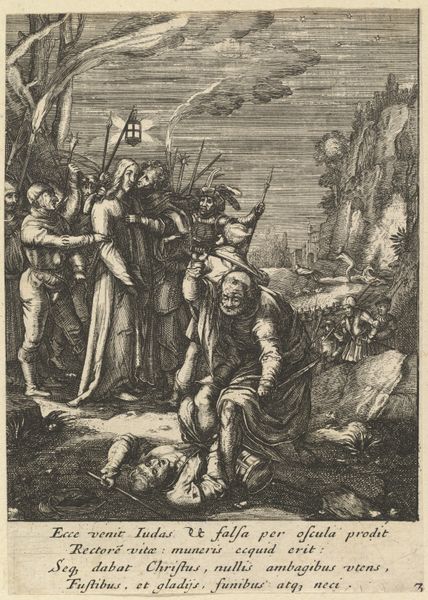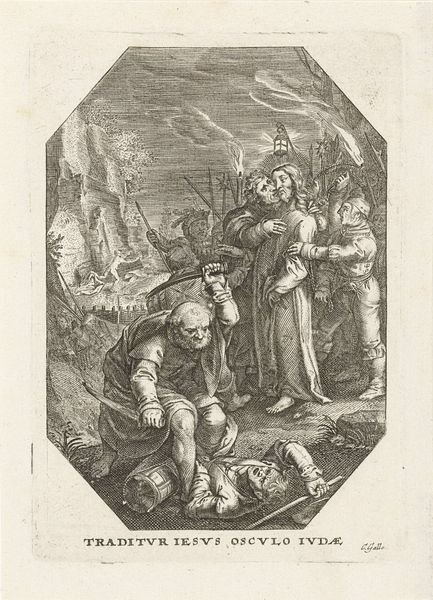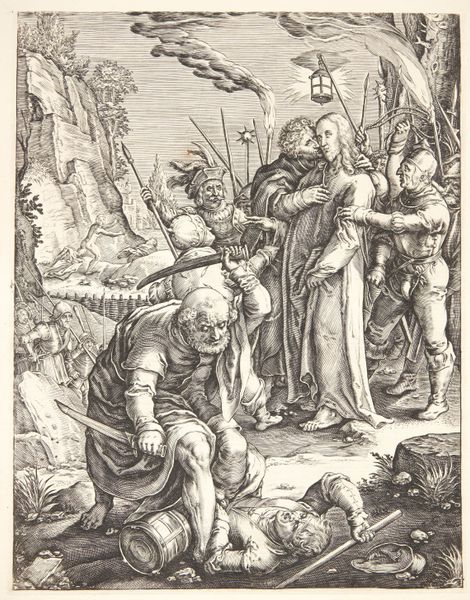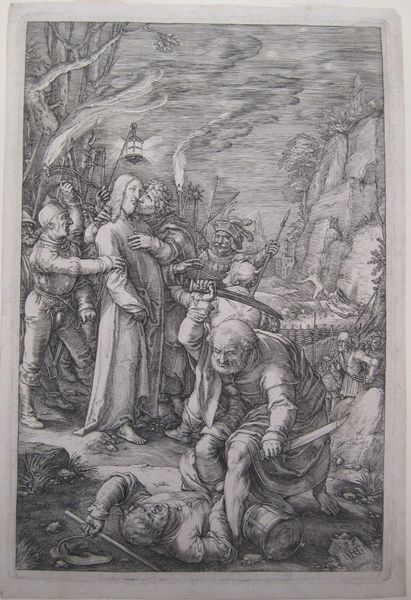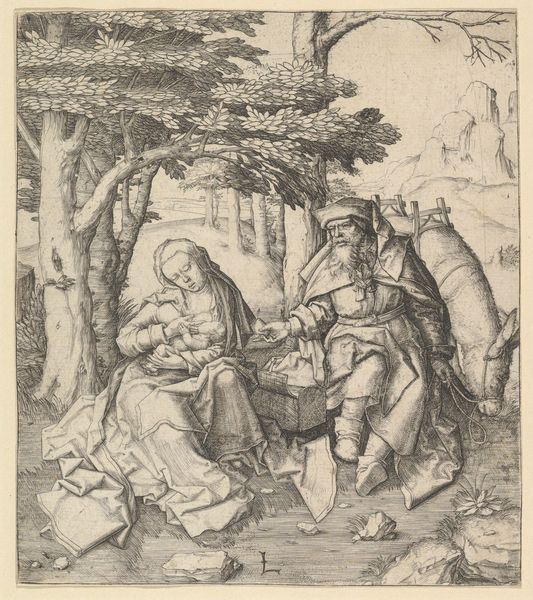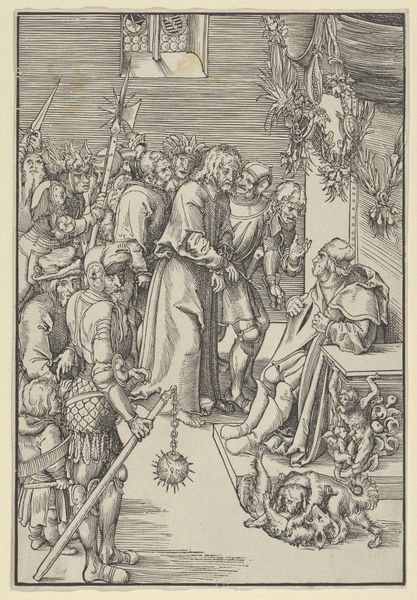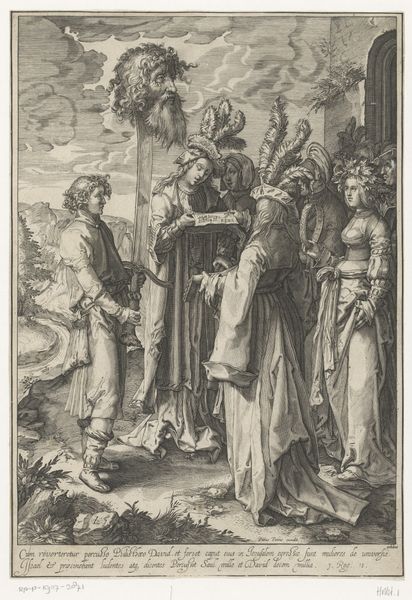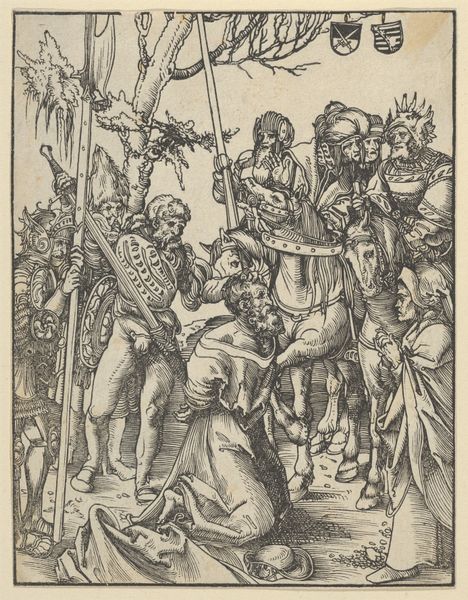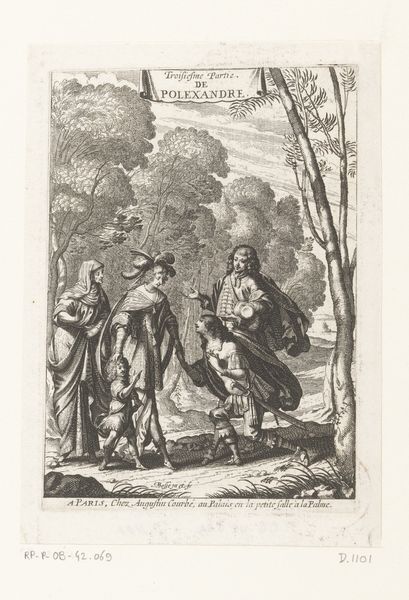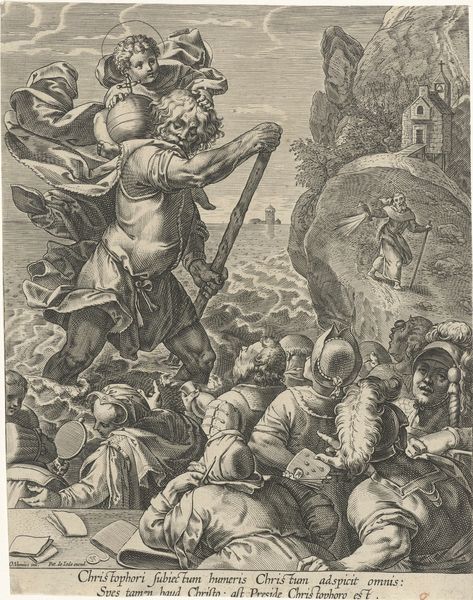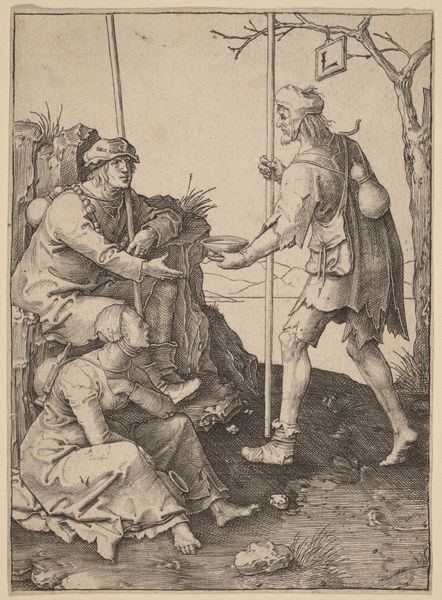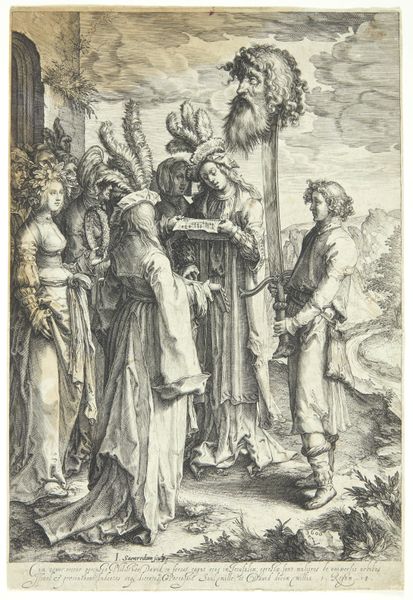
The Betrayal of Christ, from The Passion of Christ 1598
0:00
0:00
drawing, print, engraving
#
drawing
#
pen drawing
# print
#
figuration
#
line
#
history-painting
#
northern-renaissance
#
engraving
#
christ
Dimensions: sheet: 8 1/16 x 5 3/8 in. (20.5 x 13.7 cm)
Copyright: Public Domain
Curator: So, we're looking at "The Betrayal of Christ, from The Passion of Christ" created around 1598 by Hendrick Goltzius. It's an engraving, teeming with figures caught in a really dramatic moment. What grabs you first? Editor: It feels claustrophobic! That dense cluster of figures, almost swallowed by the swirling lines of the sky and the woods behind them...it's chaotic and tense. There's barely any breathing room in this little world. Curator: That sense of being hemmed in is deliberate. Goltzius crams the composition to emphasize the emotional intensity. You've got Judas' kiss right there in the center—the focal point—but it’s almost lost in the turmoil. It speaks to how betrayal often hides in plain sight, cloaked in intimacy. Editor: Exactly. And that kiss, a sign of affection turned into a marker for violence…It's disturbing how casual it seems against the raw energy of the flailing soldiers. Notice Peter cutting off the high priest's servant Malchus’ ear right in the front; below them you can see him lying there, vulnerable, helpless. Curator: Goltzius had a fascination with classical forms, but he always imbued them with this kind of nervous energy, very characteristic of the late Northern Renaissance. There is the weight of religious expectation mixed with something volatile and human. Take the light, for example. You see the flickering torches casting eerie shadows, adding to the sense of unease. Light, classically a symbol of divine truth, now a source of flickering deceit. Editor: And the individual faces… They're not just types. Each figure is given a really specific expression—anger, fear, brutality. They all add layers of motivation that point to much bigger themes. The collapse of values; institutional violence. Even Judas doesn't strike me as purely evil. There's something… troubled there, like he is compelled, but his kiss is devoid of warmth. Curator: Right, we’re faced with such difficult symbolism—an almost unbearable condensation of power, guilt, devotion, and their undoing. The drawing isn't trying to just tell a story; it's forcing us to confront our own understanding of those themes, and more pressingly, ourselves. Editor: In the end, the choice isn’t just to recall The Bible, but to explore this whole theater of gesture. I’m not sure if I could feel peace with this piece, but at least I find some brutal awareness.
Comments
No comments
Be the first to comment and join the conversation on the ultimate creative platform.
